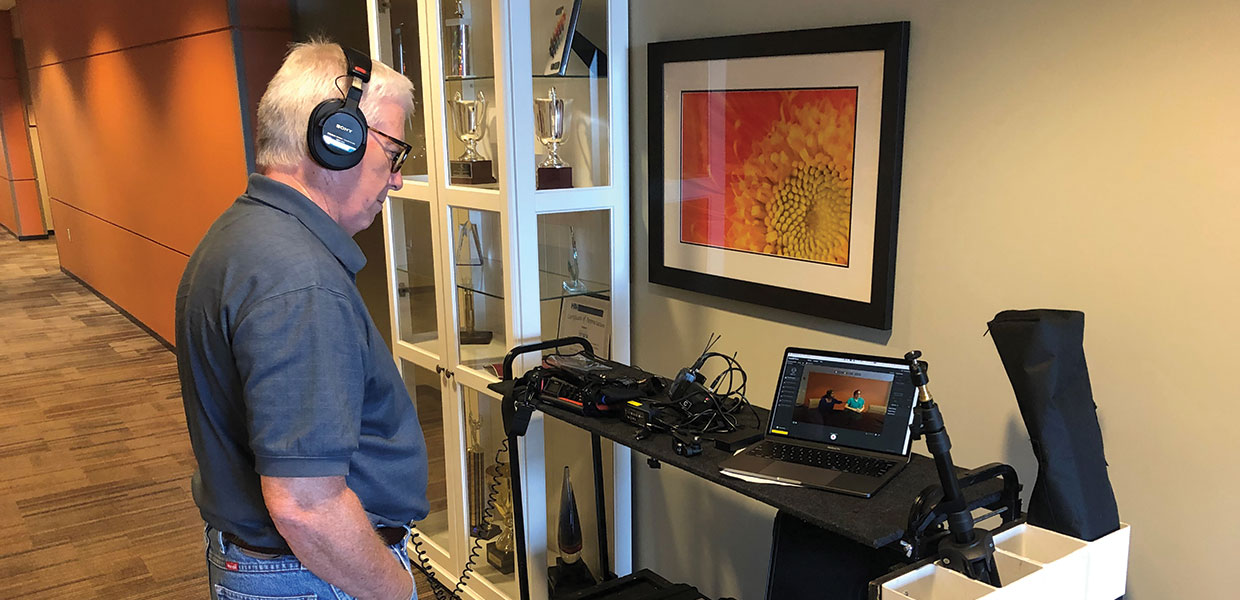
As AdventHealth University (AHU) aims to provide skilled, compassionate healthcare providers trained in whole-person care, the University continuously seeks ways to develop innovative methods to instill those qualities in its students. AHU created Caring Rounds, where students are assigned to shadow a chaplain at an AdventHealth hospital to strengthen students’ understanding of the role faith plays in healing.
This direct contact has allowed students to engage on a personal level with patients, not just as professionals. The initiative has received positive feedback from students; however, with a limited number of available chaplains with busy schedules, not all of AHU’s students have access to this valuable experience.
Currently, it’s only a requirement in AHU’s graduate programs and one undergraduate program, occupational therapy assistant (OTA). With continued demand for other programs to be included, Don Williams, Ph.D., at the time AHU’s Office of Missions’ director, began seeking ways to resolve the scheduling conflict.
Meanwhile, Dan Lim, Ph.D., vice president of educational technology and innovation, recently established AHU’s Immersive Technologies Lab, where virtual reality (VR) and 360-degree video projects were being developed to supplement educational learning. With several projects underway, Lim was looking to collaborate with more departments to discover and research more ways his lab could implement VR/360 technology in the classroom.
Williams began working with Lim on an unorthodox approach to increasing student access to the benefits of chaplain rounding. Could students gain the same or nearly the same experience through virtual reality?
The project would require additional funding. Williams applied for the Network for Vocation in Undergraduate Education (NetVUE) grant administered by the Council of Independent Colleges (CIC). According to their website, “NetVUE is a nationwide network of colleges and universities formed to enrich the intellectual and theological exploration of vocation among undergraduate students.”
The project was awarded $60,000 to be dispensed over the course of three years, with Williams as the primary investigator and Lim as co-investigator. The project was designed and entered its production stage over the summer.
Three groups from undergraduate programs will participate in the study each year. One group will participate in the face-to-face chaplain shadowing the University is currently doing. A second group will only utilize the VR shadowing, while a third control group will participate in neither activity. All three groups will take a pre- and post-test, assessing their levels of empathy and caring before and after participating. The question the team wants to answer is, according to Williams, “Have we moved the needle on empathy?”
Other social experiments in empathy and compassion have been developed as virtual reality technology has grown in popularity. Activist news organization Ryot released 360-degree videos recreating real-life conflict zones and disaster areas, including Nepal and Syria.
The aim with these projects is to remove the distance, both literal and figurative, viewers perceive between themselves and real-world events they’re seeing as images on a screen or in a book. The theory is that by consuming their field of view with the virtually replicated scenario, the emotional connection is stronger, increasing the relatability between the viewer and the people and places being shown.
Can this modality have a measurable impact on a person’s capacity for caring? This is the hypothesis Williams and Lim aim to test with their immersive VR empathy modeling project.
The first year, five scenarios will be shown to the VR research group. In each scenario, a hospital chaplain will play their role while an actor will play the part of the person receiving the chaplain’s care. The VR user will play the role of silent observer. The scenarios will be staged and produced in collaboration with AHU’s Simulation Center, providing the space and simulation equipment.
The second year of the project, the team will develop three new scenarios. In these scenarios, the VR user instead will be observing from the perspective of the hospital chaplain. In the third year, three new scenarios will be developed, and in these the VR user will now take the role of the patient. They will be seeing the chaplain and hearing their words, experiencing the receiving of care.
According to Lim, the first phase of production has been completed. The next step is to initiate the roll out of the initial five VR scenarios to the first cohort of students. The team hopes to start later this year.
The importance of faith in healing is interwoven with AHU’s training of whole-person care. The emerging VR technology could revolutionize the way students are immersed in empathy training. As the institution grows, AHU will continue to make its mark in transformative education by innovating new methods of delivery.
AdventHealth University | November 2019



Comments are closed.